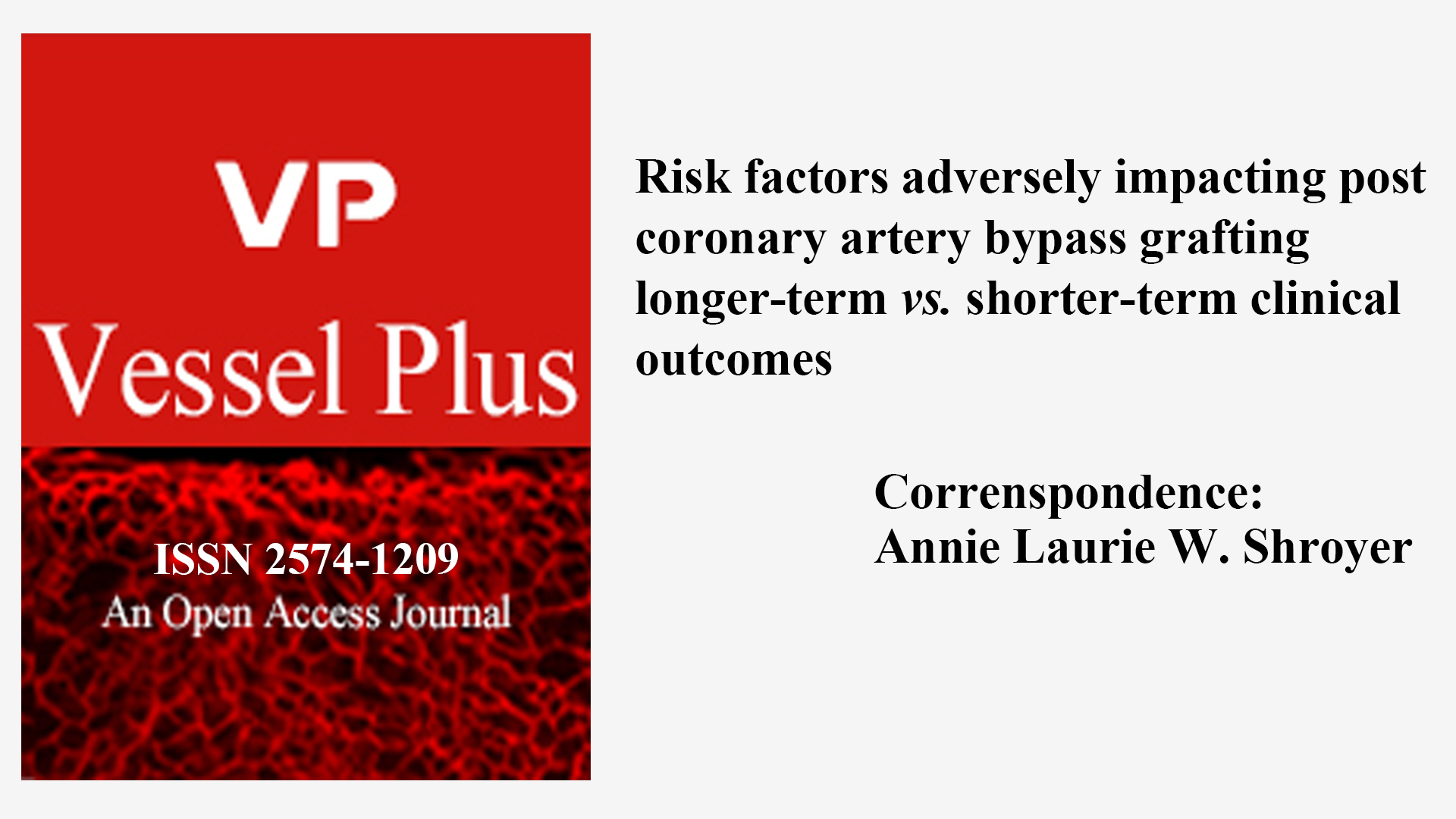Risk factors adversely impacting post coronary artery bypass grafting longer-term vs. shorter-term clinical outcomes
Coronary artery bypass grafting (CABG) patients’ characteristics and surgical techniques associated with short-term (ST; < 1 year) mortality are well documented; however, the literature pinpointing factors predictive of longer-term (LT; ≥ 1 year) death rates are more limited. Thus, the CABG factors associated with ST vs. LT mortality were compared.
Using advanced PubMed search techniques, the factors associated with improved post-CABG mortality were compared for ST vs. LT prediction models; ST vs. LT models’ results were compared across three time periods: until 1997, 1998-2007, and 2007-2017.
Of 156 post-CABG mortality risk models (n = 125 publications), 133 ST and 23 LT models were evaluated. Important predictors consistently included age, ejection fraction, and renal dysfunction/dialysis. The ST models more commonly identified surgical priority, gender, and prior cardiac surgery; however, the LT models more frequently included diabetes and peripheral arterial disease. Compared to ST mortality, patterns also emerged for cerebrovascular disease and chronic lung disease predicting LT mortality. As modifiable risks, body mass index or another marker of body habitus appeared in 31/133 (23%) of ST models; smoking or tobacco use was considered in only 4/133 (3%). No models evaluated compliance with ischemic heart disease guidelines. No time period-related differences were found.
Different risk factors predicted ST vs. LT post-CABG mortality; for LT death, debilitating chronic/complex comorbidities were more often reported. As few models focused on identifying modifiable patient risks or ischemic heart disease guideline compliance, future CABG LT risk modeling should address these knowledge gaps.
